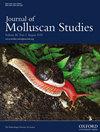日本蓝纹章鱼中河豚毒素的水平和分布,特别是体内分配
IF 1.9
4区 生物学
Q2 MARINE & FRESHWATER BIOLOGY
引用次数: 8
摘要
有毒动物体内的毒素具有攻击和防御功能。蓝纹章鱼在各种器官中都含有河豚毒素(TTX),包括唾液腺、肌肉和皮肤,TTX被认为可以用于进攻和防御。在这项研究中,我们通过测量日本采集的H.fasciata标本中TTX的水平和分布,并通过研究TTX在体内的分配,来探索H.fasciatta毒性的演变。在所研究的13名成人和3名副婴儿中均检测到TTX。TTX在前唾液腺和后唾液腺的浓度最高,在肌肉和皮肤中的总量最高。较大个体的TTX含量显著较高,但肌肉和皮肤中的TTX浓度与体重无关。TTX浓度存在很大的个体差异,一些个体表现出极低的TTX水平。这些个体差异可能与区域、季节和性别差异有关,尽管TTX在该物种中的起源尚不清楚。此外,我们发现后唾液腺中的TTX浓度与肌肉和皮肤中的TTX浓度之间存在强烈的正相关性,前者是后者的约20倍。这表明,分配比率可能不是由塑性分配产生的,反映了每个器官的TTX需求或可用TTX的量,而是可能至少在一定程度上是进化固定的。本文章由计算机程序翻译,如有差异,请以英文原文为准。
Levels and distribution of tetrodotoxin in the blue-lined octopus Hapalochlaena fasciata in Japan, with special reference to within-body allocation
The toxins present in poisonous and venomous animals have both offensive and defensive functions. The blue-lined octopus Hapalochlaena fasciata has tetrodotoxin (TTX) in various organs, including the salivary glands, muscles and skin, and TTX is assumed to be used in both offence and defence. In this study, we explore the evolution of toxicity in H. fasciata by measuring the levels and distribution of TTX in H. fasciata specimens collected in Japan and by investigating the TTX allocation within the body. TTX was detected in all 13 adults and 3 paralarvae studied. The concentration of TTX was highest in the anterior and posterior salivary glands, and the total amount of TTX was highest in the muscles and skin. Larger individuals had significantly higher amounts of TTX, but the TTX concentrations in the muscles and skin were not correlated with body weight. There were large individual differences in TTX concentration and some individuals showed extremely low TTX levels. These individual differences may be related to regional, seasonal and sexual differences, although the origin of TTX in this species is still unclear. Furthermore, we found a strong positive correlation between TTX concentrations in the posterior salivary gland and TTX concentrations in muscles and skin, with the former being c. 20 times greater than the latter. This suggests that the allocation ratio may not result from a plastic allocation, reflecting the TTX needs of each organ or the amount of available TTX, but rather may, at least partly, be evolutionarily fixed.
求助全文
通过发布文献求助,成功后即可免费获取论文全文。
去求助
来源期刊

Journal of Molluscan Studies
生物-动物学
CiteScore
3.00
自引率
8.30%
发文量
36
审稿时长
3 months
期刊介绍:
The Journal of Molluscan Studies accepts papers on all aspects of the study of molluscs. These include systematics, molecular genetics, palaeontology, ecology, evolution, and physiology. Where the topic is in a specialized field (e.g. parasitology, neurobiology, biochemistry, molecular biology), submissions will still be accepted as long as the mollusc is the principal focus of the study, and not incidental or simply a convenient experimental animal. Papers with a focus on fisheries biology, aquaculture, and control of molluscan pests will be accepted only if they include significant advances in molluscan biology. While systematic papers are encouraged, descriptions of single new taxa will only be considered if they include some ‘added value’, for example in the form of new information on anatomy or distribution, or if they are presented in the context of a systematic revision or phylogenetic analysis of the group.
 求助内容:
求助内容: 应助结果提醒方式:
应助结果提醒方式:


